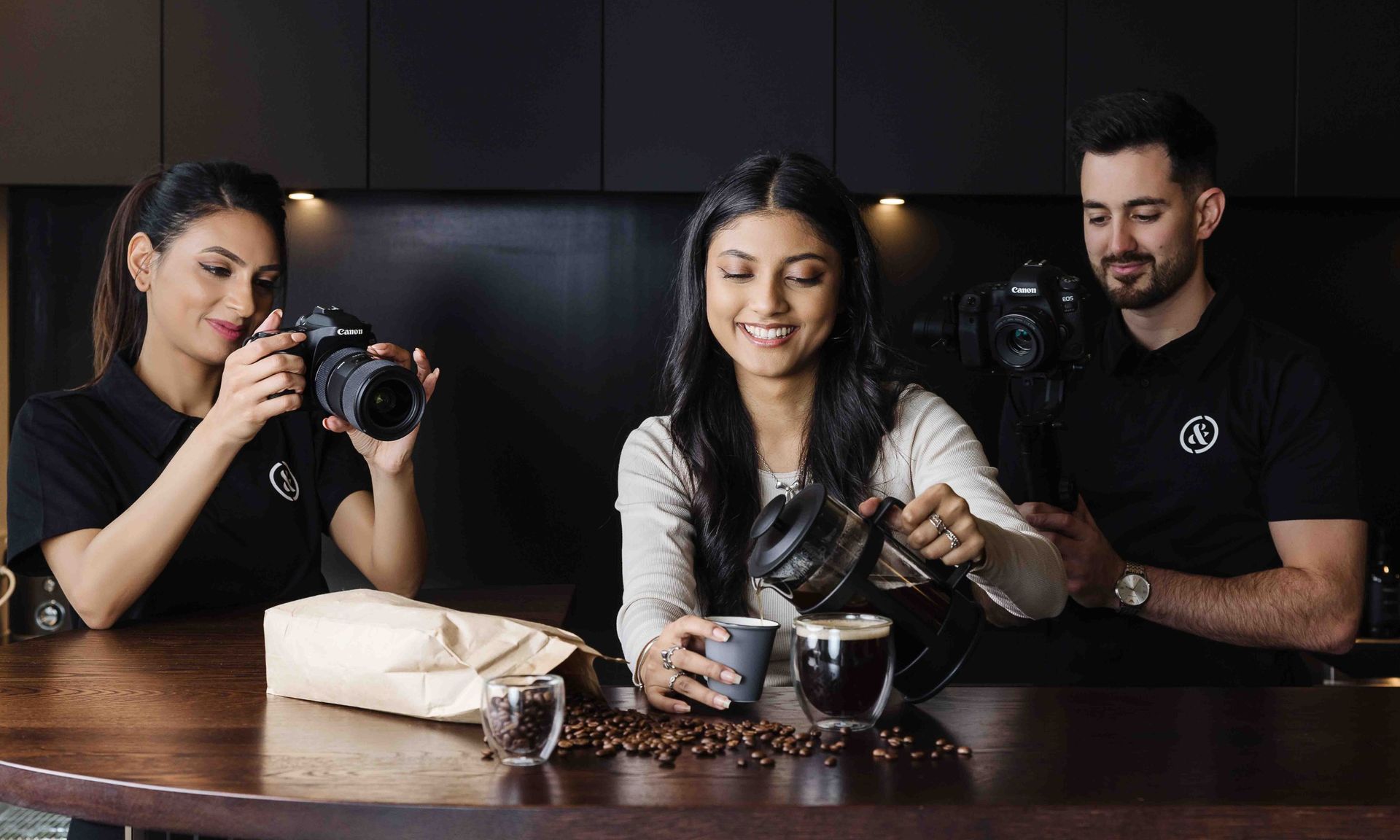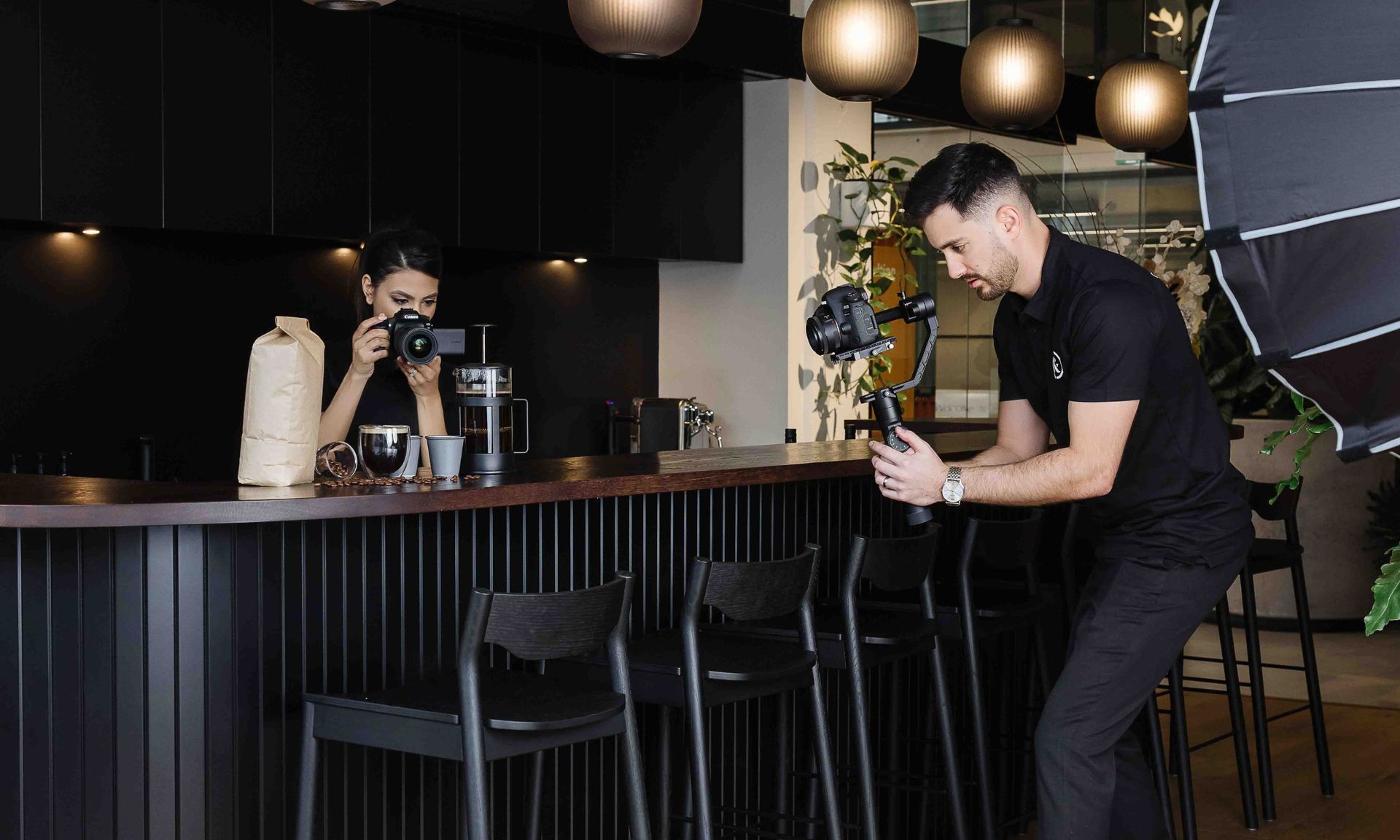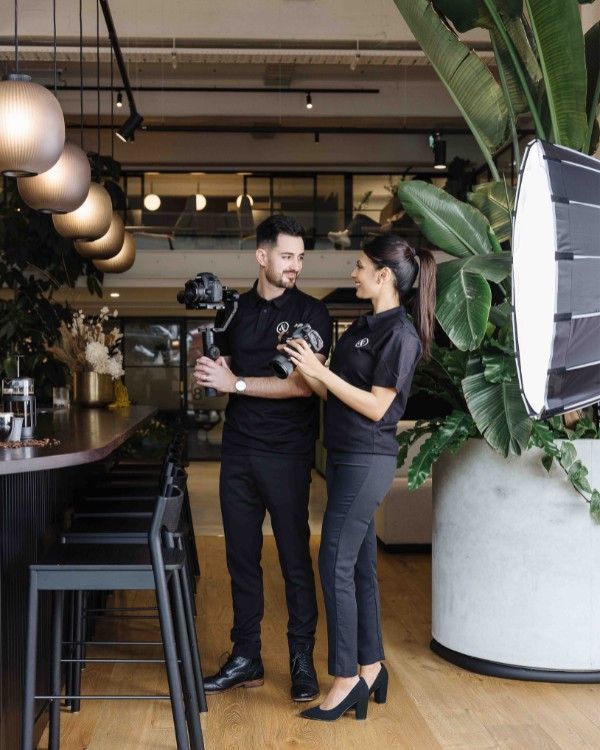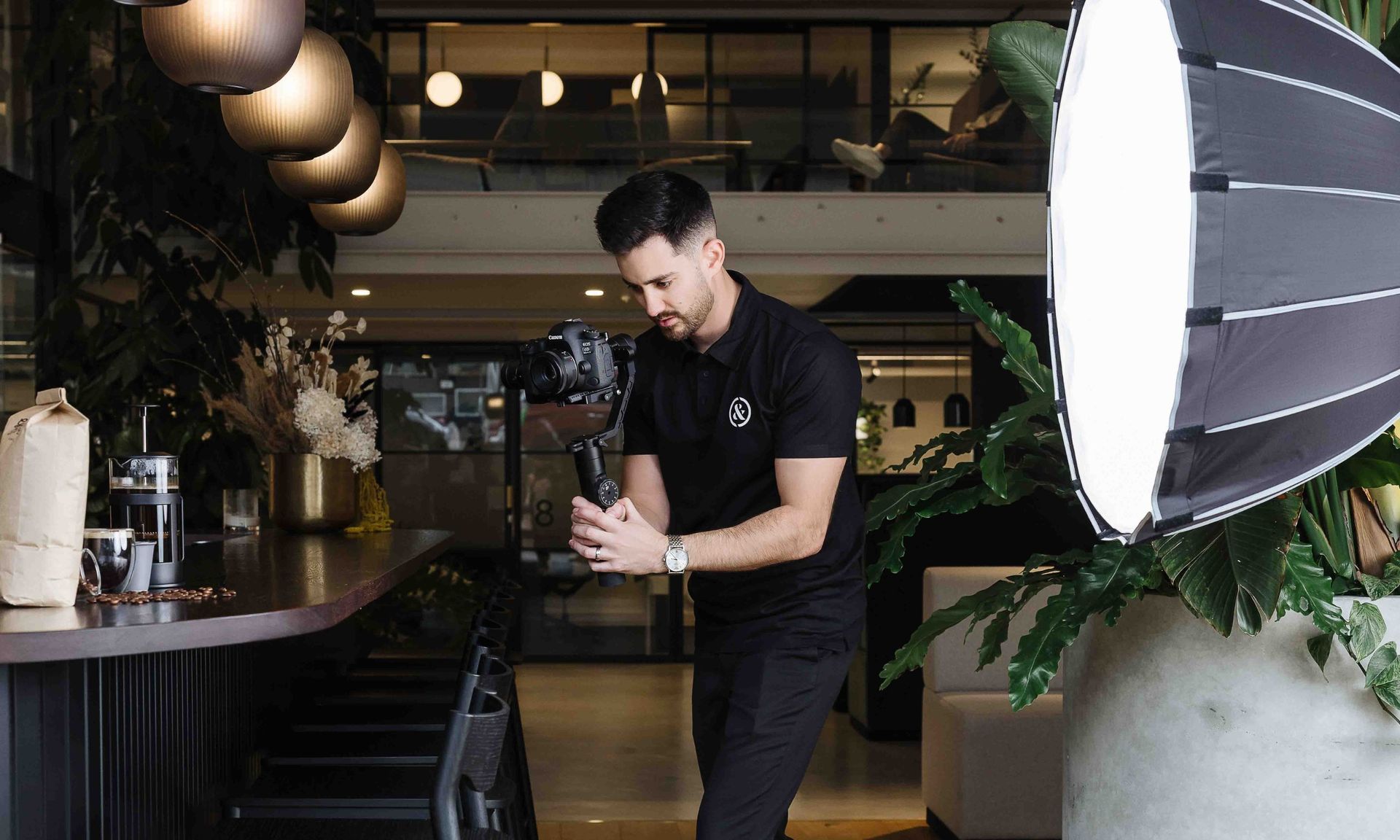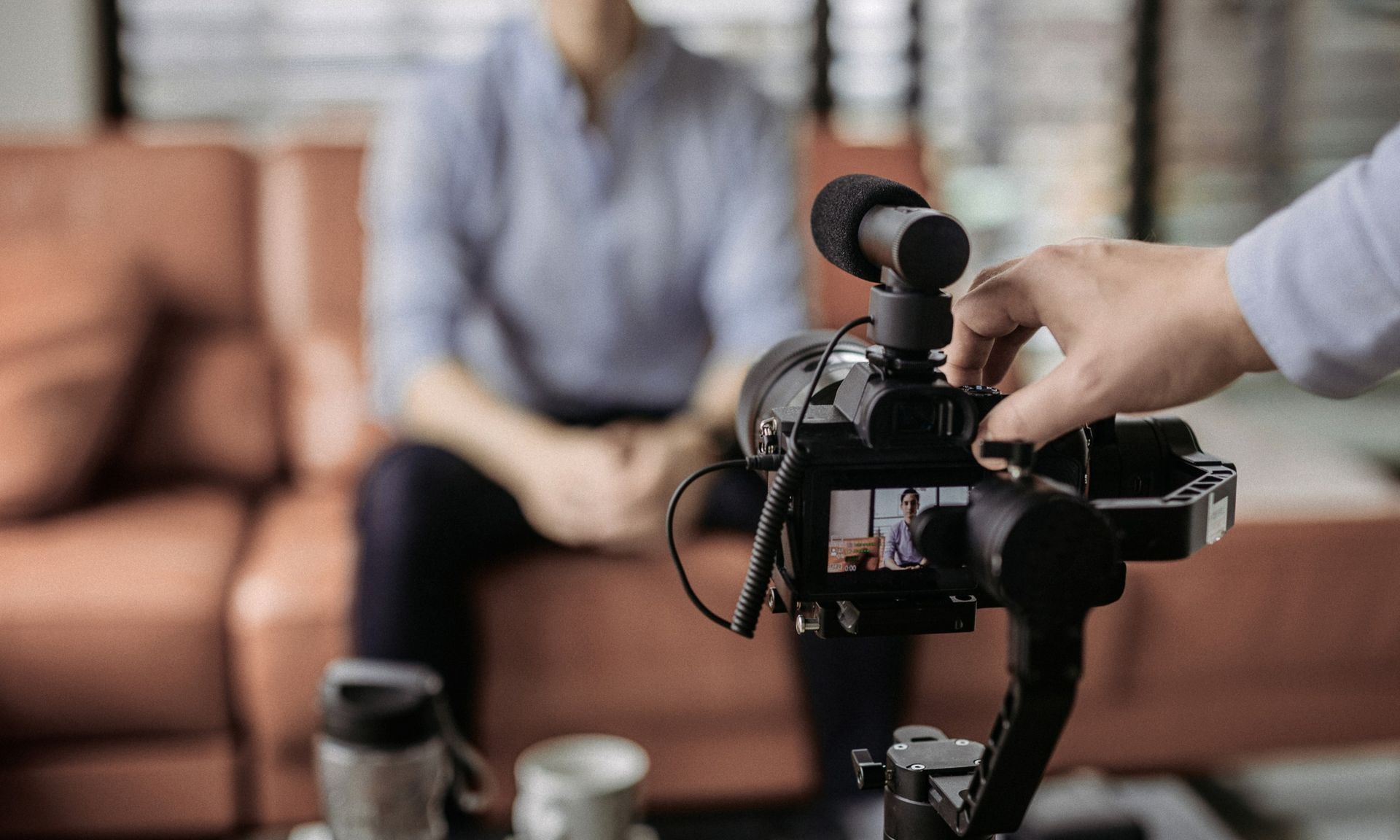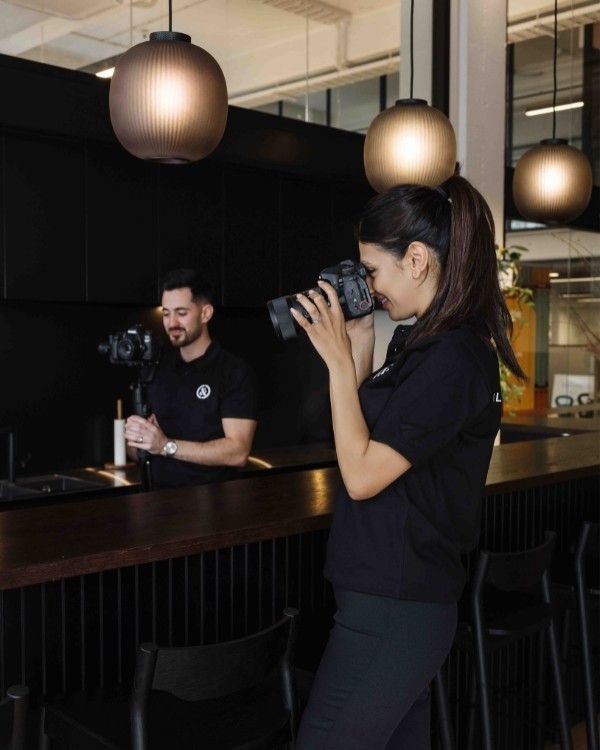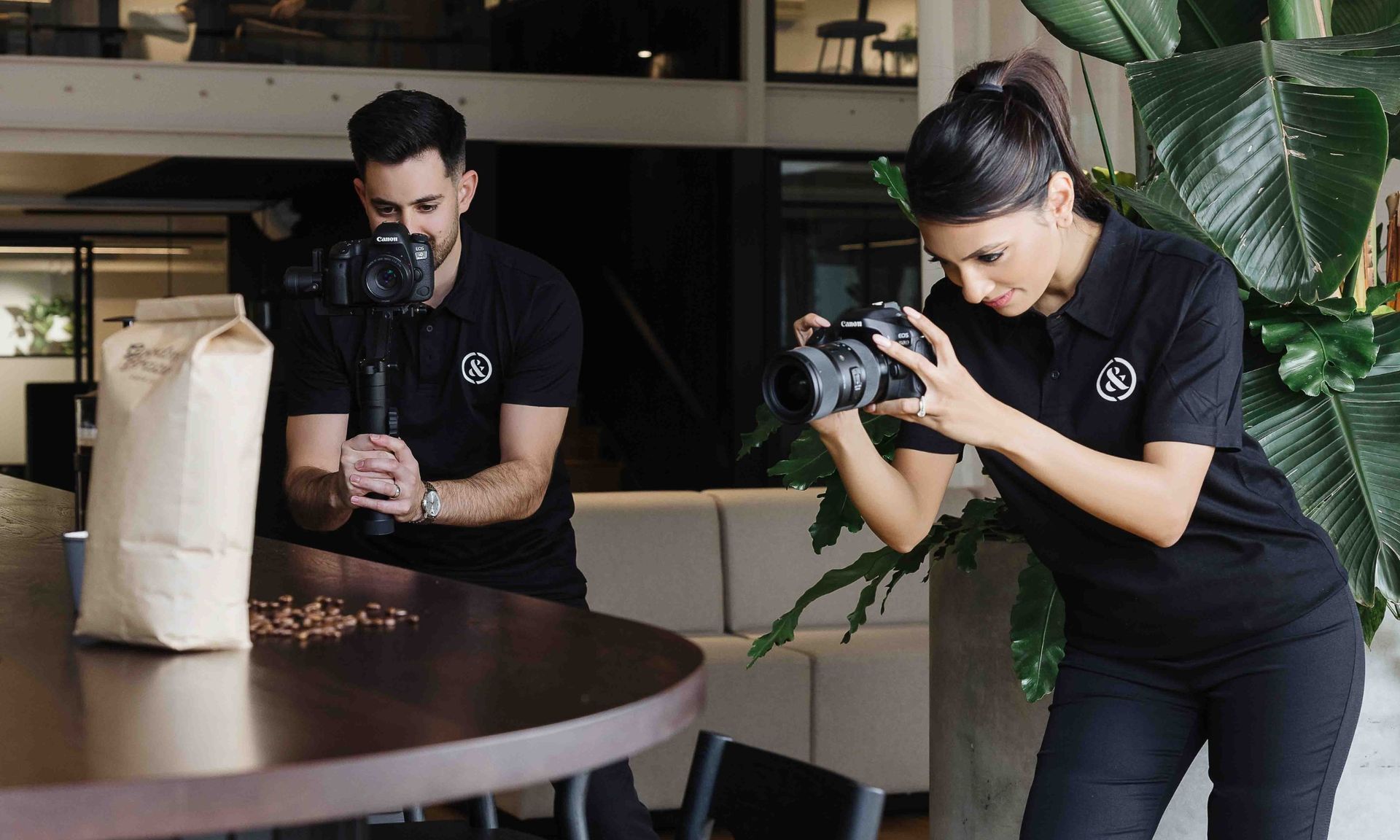A simple way to build trust with customers: Behind-the-scenes videos
Behind-the-scenes videos
A simple way to build trust with customers
For small businesses, building customer trust is one of the hardest and most valuable goals in marketing. While strong branding and clear messaging play a key role, trust often starts when people see the human side of your business. Behind-the-scenes (BTS) videos are one of the most effective ways to show the human side of your business. This simple video format offers an authentic look at the people, processes, and values that drive what you do, helping potential customers feel more confident in choosing you.
ARTICLE CONTENTS
What this article will cover
If you’re thinking about using video in your marketing but don’t know where to start, behind-the-scenes content is a great first step. In this article, we’ll explore how these videos build trust, what to include, how to film them, and where to share them for the biggest impact.
Why BTS videos work for trust building
Understand why this simple video format is so effective in building credibility with your audience.
What makes a good behind-the-scenes video?
Find out what makes BTS content feel natural, relevant, and worth watching, even if it’s only 30 seconds long.
How to plan and shoot a BTS video
Get practical advice for planning, filming, and sharing BTS clips using tools you already have.
Where and how to use BTS videos in your marketing
Learn about some of the best platforms to share your BTS content.
Why video marketing works
See why video marketing delivers results and how BTS clips can support your bigger brand strategy.
Why behind-the-scenes videos work for trust building
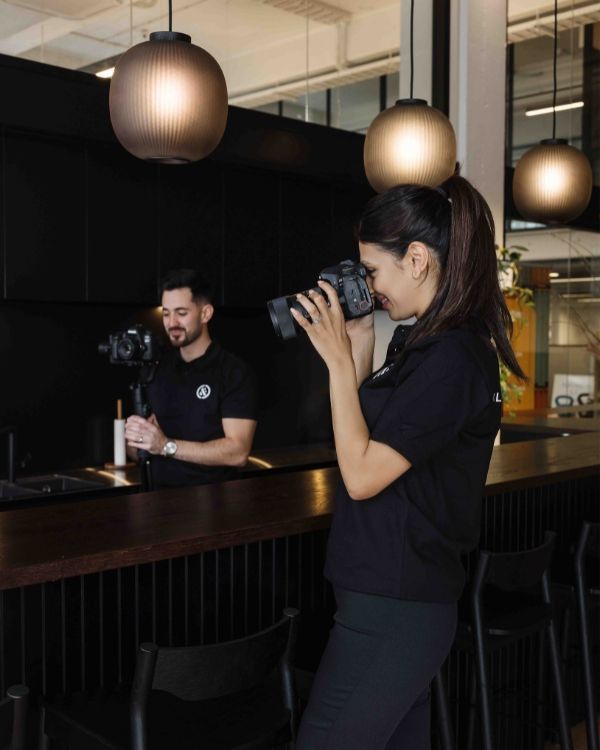
Trust is built on connection.
For customers to feel confident working with your business, they need to believe there are real people behind the logo, people who care about their craft and stand by what they offer. Behind-the-scenes videos help create that connection in a way few other marketing tools can.
Brands that feature team members or real processes in their video content are more likely to capture attention and build long-term loyalty (Think with Google, 2024). When someone sees how your team works, how you prepare for a job, or what happens before a product reaches the customer, it builds transparency. And transparency builds trust. These kinds of videos show your audience that what happens off camera matters just as much as what is presented to the public. They signal authenticity, which has a growing influence on buying behaviour, particularly among customers seeking local or service-based businesses.
Being visible, real, and consistent is what helps your business stand out, especially in crowded markets.
What makes a good behind-the-scenes video?
Behind-the-scenes videos work best when they feel intentional and relevant. They’re a chance to show your audience what your business is really like - the people, the process, and the values behind the scenes. Here’s some things that make this type of content effective.
Show something real
Behind-the-scenes videos work best when they show what actually happens in your business. This could be a team member preparing for a job, setting up equipment, or explaining part of a process. It doesn’t need to be scripted, just honest and relevant.
Keep it focused
Each video should communicate one clear idea. If you’re filming a short clip, think about what you want the viewer to learn or understand. Avoid trying to cover too much in one go.
Make it relatable
Content that feels human is easier to connect with. Show faces, conversations, or day-to-day activity. Even a few seconds of a real team member doing real work can make your business feel more trustworthy and approachable.
Prioritise clarity
Aim for clear messaging and a steady visual. Natural light, quiet spaces, and a quick check of your framing can go a long way in helping viewers stay engaged.
Share consistently
Posting behind-the-scenes content regularly helps people get to know your team and the way you work. Over time, this builds familiarity and trust which is especially valuable for service-based businesses.
How to plan and shoot a BTS video
Without a production crew
Behind-the-scenes videos are one of the most accessible types of content to create. The key is knowing what you want to share and how it will add value for your audience.
Planning
1
Start by identifying moments in your day that customers don’t usually see but would find interesting or reassuring. This could be preparing materials for a job, walking through part of your process, or welcoming a client into your space. Think of it as storytelling through small details.
2
Run-through
Before you start filming, do a quick run-through in your head. What are you trying to show? What’s the key takeaway for your audience? A short outline helps keep the content on track and avoids rambling or repetition.
3
Environment
Good natural light, minimal background noise, and a steady frame will do most of the work. If you’re using a phone, wipe the lens and hold it at eye level or slightly above. Speak clearly, keep it short, and don’t be afraid to redo a take if it doesn’t feel right.
Permissions
Finally, check permissions. If you’re filming staff or customers, make sure they’re comfortable being on camera. A quick heads-up goes a long way in keeping things respectful and professional.
4
Where and how to use BTS videos in your marketing
Once you’ve created behind-the-scenes content, the next step is using it with purpose. These videos can be shared across your main marketing channels to support visibility, build credibility, and strengthen your brand message. Below are a few of the most effective ways to use BTS videos in your marketing mix.
Social media
Short behind-the-scenes videos are ideal for platforms like Instagram Reels, Facebook Stories, and LinkedIn. Giving your audience a quick, personal look at how your business operates. Keep the message clear and consistent.
Email and blog posts
A short behind-the-scenes video in a newsletter or blog can reinforce your message and keep your audience engaged. It’s a great way to show personality and add variety without needing to create something new for every channel.
Website content
Including behind-the-scenes videos on your website helps build trust with new visitors. Add them to your About page, team page, or service pages to give people a better sense of who you are and how you work. It can make the experience more personal and help you stand out.
Video content
Behind-the-scenes videos are more than just casual content. They support brand trust and help guide potential customers through the early stages of the decision-making process. Used consistently, they can become one of your most effective tools for connection and credibility.
Why video marketing works
"87% of marketers report a strong return on investment from video"
Forbes, 2020
Video is one of the most effective ways to capture attention, build credibility and stay top of mind with potential customers. For small businesses, it can level the playing field, especially when the content feels honest and human.
Statistics show that 87% of marketers report a strong return on investment from video, with gains not just in clicks or views but in trust and brand perception (Forbes, 2020). Businesses that show real people and processes in their videos are more likely to build long-term loyalty and keep viewers engaged (Think with Google, 2024).
While polished campaigns have their role to play, behind-the-scenes videos give small businesses another opportunity to connect in a personal way. They offer a level of openness and relatability that can make your business feel more approachable and trustworthy to potential customers.
The key is to start. Waiting for the perfect moment or the perfect setup can hold your marketing back. A simple behind-the-scenes video that is shared consistently can help your business stay visible, build familiarity, and turn interest into action over time.
Conclusion
Building trust takes time, but behind-the-scenes videos can help speed up that process by showing the people and values behind your business. They don’t need to be complex or highly produced. What matters is that they’re consistent, honest, and relevant to the people you’re trying to reach.
By letting your audience see how you work, what your team is like, and what goes on behind closed doors, you create the kind of familiarity that leads to long-term customer relationships. These small moments of visibility add up, especially when they’re part of a broader video marketing strategy.
If your business is already posting content or thinking about how to grow online, behind-the-scenes videos are a simple, effective place to start.
Need help creating videos that actually connect with your audience? Talk to Clarke & Clarke about building a video marketing strategy that works for your business.
Frequently asked questions
Still have questions about using behind-the-scenes videos in your marketing? Here are some quick answers to help you get started with confidence.
How long should a behind-the-scenes video be?
The ideal length can vary depending on where you’re posting. Anywhere from 15 seconds to one minute is ideal for social media. Just make sure it communicates one clear idea.
What kind of content works well for BTS videos?
Show what people don’t usually see - prepping for a job, a team moment, packing an order, or explaining how something works.
Can BTS videos work for professional services, not just trades?
Yes. Whether you’re a physio, accountant, or designer, showing your process or workspace helps make your business more relatable.
What if I feel uncomfortable on camera?
That’s completely normal, especially at first. The goal isn’t to perform, it’s to show what’s real. Focus on doing your job as usual and have someone else film, or capture moments where you don’t need to speak directly to camera.
Can I reuse behind-the-scenes videos across different platforms?
Yes, absolutely. A single clip can be edited or repurposed for Instagram, Facebook, LinkedIn, your website, or even email. Just make sure the format suits the platform. For example, use vertical video for Stories and square or horizontal formats for feeds or websites. Or adjusting the length of the video for different platforms.




